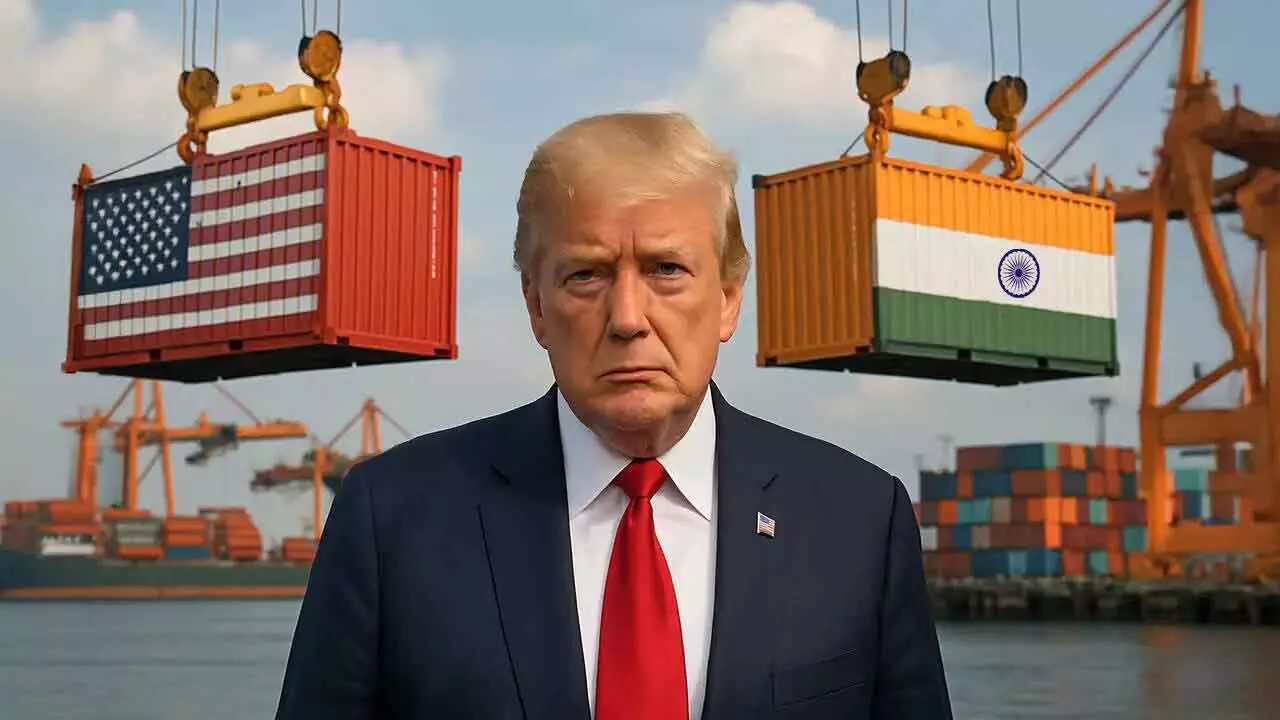World
Trump’s 50% Tariffs Disrupt Indian Exports and Jobs

Indian exports to the United States are facing a significant setback as the administration of Donald Trump begins to enforce 50% tariffs on a wide range of goods starting Wednesday. This decision is anticipated to negatively impact low-margin, labour-intensive sectors such as apparel, textiles, gems and jewellery, shrimps, carpets, furniture, and handicrafts, all of which are heavily reliant on the American market.
Trade experts are forecasting that India’s merchandise exports to the US could decline by as much as 40–45% in 2025-26 compared to the previous fiscal year. The Global Trade Research Initiative (GTRI) predicts that exports may plummet to around $49.6 billion, down from nearly $87 billion in FY25. With nearly two-thirds of India’s shipments to the US now subject to tariffs of up to 50%, many products are expected to become uncompetitive in the market.
Impact on Key Industries
While approximately 30% of Indian exports, worth $27.6 billion, will remain duty-free—primarily pharmaceuticals, electronics, and petroleum products—another 4% will incur 25% tariffs, mainly affecting auto parts. In contrast, competitors such as Vietnam, Bangladesh, and Cambodia continue to benefit from lower tariffs, positioning themselves to capture market share lost by India.
The new tariffs include a 25% duty introduced in July, followed by an additional 25% imposed in August as a penalty for India’s oil and defence imports from Russia. This situation presents an unprecedented challenge for exporters in sectors like home textiles, carpets, and shrimp, which depend heavily on the US for up to 60% of their sales.
Job Losses and Industry Response
Industry bodies have raised alarms about potential job losses numbering in the hundreds of thousands. The Gem and Jewellery Export Promotion Council has warned that these steep tariffs could disrupt supply chains and result in billions in lost trade, with the US accounting for nearly a third of India’s jewellery exports.
Textile exporters are calling for immediate government intervention, including cash assistance and loan moratoriums, to stave off extensive unemployment. Although sectors such as pharmaceuticals and electronics currently enjoy a tariff exemption, Trump has indicated that he may impose higher duties on these categories unless production shifts to the US.
Concerns about the broader economic implications of these tariffs have also been voiced by economists, including Nobel laureate Paul Krugman. He has warned that such tariffs could lead to inflationary pressures and deepen stagflation in the US. For India, however, the immediate focus remains on the potential decline in exports and the associated job losses in its most vulnerable industries.
-

 World4 months ago
World4 months agoSBI Announces QIP Floor Price at ₹811.05 Per Share
-

 Lifestyle4 months ago
Lifestyle4 months agoCept Unveils ₹3.1 Crore Urban Mobility Plan for Sustainable Growth
-

 Science3 months ago
Science3 months agoNew Blood Group Discovered in South Indian Woman at Rotary Centre
-

 World4 months ago
World4 months agoTorrential Rains Cause Flash Flooding in New York and New Jersey
-

 Sports3 months ago
Sports3 months agoBroad Advocates for Bowling Change Ahead of Final Test Against India
-

 Top Stories4 months ago
Top Stories4 months agoKonkani Cultural Organisation to Host Pearl Jubilee in Abu Dhabi
-

 Science4 months ago
Science4 months agoNothing Headphone 1 Review: A Bold Contender in Audio Design
-

 Top Stories4 months ago
Top Stories4 months agoAir India Crash Investigation Highlights Boeing Fuel Switch Concerns
-

 Sports3 months ago
Sports3 months agoCristian Totti Retires at 19: Pressure of Fame Takes Toll
-

 Business4 months ago
Business4 months agoIndian Stock Market Rebounds: Sensex and Nifty Rise After Four-Day Decline
-

 Politics4 months ago
Politics4 months agoAbandoned Doberman Finds New Home After Journey to Prague
-

 Top Stories4 months ago
Top Stories4 months agoPatna Bank Manager Abhishek Varun Found Dead in Well









